Plate Tectonics, Types of Volcanoes, and Eruptions
The following text describes in a general way the process of plate tectonics and the activity that produces earthquakes and volcanoes. We will be able to introduce ourselves to the different types of volcanoes and their eruptions.

Volcanic eruptions are phenomena that attract powerful attention; they are events that allow us to perceive that ours is an active planet that manifests itself in different ways. Sometimes these manifestations are violent and do not allow time to reflect on nature's reasons for such a formidable display of power.
Nevertheless, it is important to recognize the origins of volcanic activity and the diverse ways in which it manifests itself to understand the environment in which we live and, consequently, to be able to meditate on the role that corresponds to us during an eruptive event, especially to know how to react and protect ourselves from the effects of volcanic activity.
The basis of a decrease in the impact of natural phenomena is prevention, but there can be no prevention without having the basic knowledge about the phenomena from which we want to protect ourselves.
Along these lines, the process of plate tectonics, the mother of the activity that produces earthquakes and volcanoes, is described in a general way. By understanding a little about this globalizing theory of the phenomena that occur on our planet, we will be able to introduce ourselves to the different types of volcanoes and their eruptions.
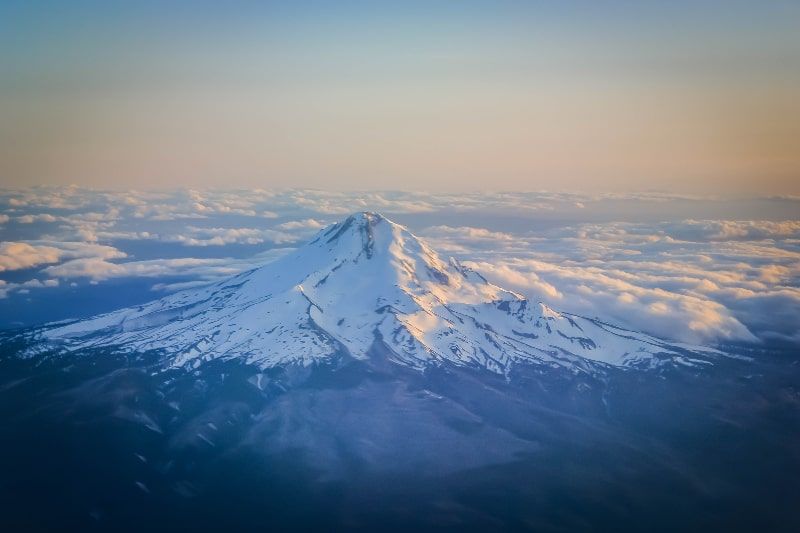
Plate tectonics
Plate tectonics is a theory that explains in an integrated way the different phenomena that occur in the interior of the Earth and that have a manifestation on the surface of the planet, such as seismicity, volcanism, mountain formation, etcetera.
To understand plate tectonics, it is necessary to know how the interior of our planet is constituted. Seismologists, since the last century, have been trying to understand the physical state of the materials in the interior of the planet and the dimensions of the different layers. Seismic waves made it possible to recognize that the planet is made up of core, mantle, and crust.
How do we know this? The way to know this depends on the changes in the velocity of the seismic waves since the differences in chemical composition and physical state of the materials at depth make the waves travel faster or slower and even disappear. The development of modern seismology has made it possible to provide more detailed knowledge of the regions that exist in the interior of the Earth.
For example, today we know that the core is made up of two parts, the innermost is solid and the outermost is in a liquid state. We know that the mantle is also made up of two layers: the lower mantle and the upper mantle. The thinnest layer of all is the earth's crust and there are also two types: oceanic and continental.
Current knowledge of the Earth's interior allows us to understand even more. We know, for example, that part of the upper mantle is partially molten, i.e., part of the materials found in that region are in a liquid state (about 10%), which makes it behave like a plastic material that can be easily deformed. The part above this plastic zone is completely solid and behaves rigidly, breaking when subjected to stress. The plastic zone is known as the asthenosphere and the rigid part as the lithosphere.
The physical conditions of these two zones are mainly responsible for plate tectonics since the lithosphere is located above a zone that easily deforms, such as the asthenosphere. As the materials of the asthenosphere move, the components of the lithosphere do not respond similarly due to their rigidity and break into different portions known as tectonic plates. Thus, the different plates are "floating" on the asthenosphere.
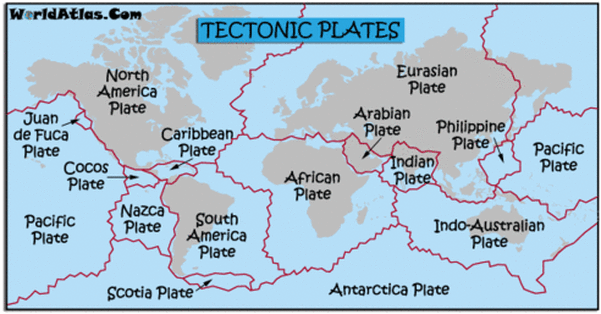
The materials of the asthenosphere move according to the distribution of the Earth's internal heat. The cold portions move toward the hot zones and the hot portions toward the cold zones. This process is known as convection. The convection of materials from the interior of the planet in the asthenosphere causes the plates to move like rafts.
When two convection currents separate, the tectonic plates also separate, and when two convection currents meet, the plates collide. It is also the case that two plates move side by side without moving in opposite directions or colliding with each other, they only rub against each other.
The regions where two plates separate are called divergence zones and the regions where they collide are called convergence zones. The most spectacular phenomenon in divergence zones is volcanism, although more than 80% of it occurs in submarine form. Several processes occur in convergence zones, such as subduction, progeny, and also volcanism. Volcanoes are formed in the divergence and convergence zones.
Subduction means that when two plates collide, the heavier of the two sinks beneath the lighter one. Orogeny causes the areas in the vicinity of the colliding plates to compress and fold, rise and form mountains. A plate that sinks beneath another enters the Earth's interior again and is exposed to such high pressures and temperatures that eventually the rocks of both plates melt and form a liquid called magma.
Magmas are liquid rocks mixed with gases that have a less dense consistency than neighboring rocks that did not melt, which is why they tend to move towards areas of lower pressure such as the Earth's surface. As they rise to the surface, magmas are the cause of volcanism. Volcanism is therefore a phenomenon produced by a more complicated process of plate tectonics, which is subduction.
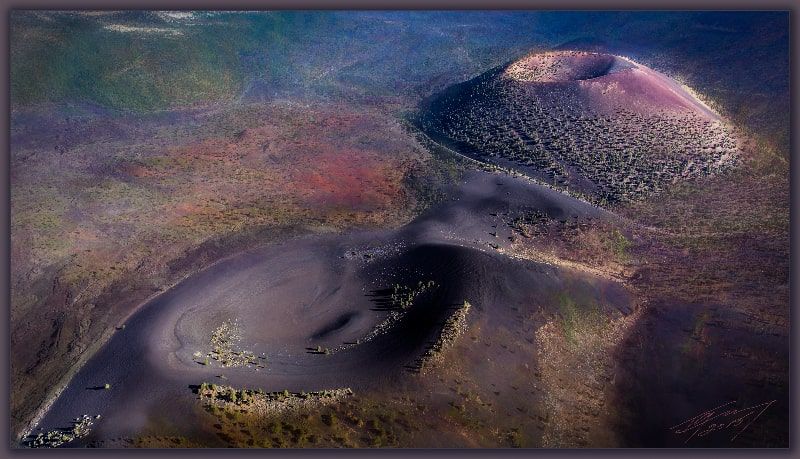
Types of volcanoes
Volcanoes are the direct expression of volcanism, that is, they are the result of magmas reaching the surface. A volcano is a building that results from piling up the emanated materials. The magmas that come to the surface are called lavas and the fragments of lava or rock that are pulverized in volcanic explosions are known as pyroclasts. Pyroclasts, according to their size, are called: volcanic ashes if their size is similar to sand or smaller, and lapilli, blocks, or bombs when they are larger.
The accumulation of these materials gives rise to volcanoes and due to the diversity of eruption forms, there are several types of them. Sometimes, magmas do not manifest themselves in an explosive form and are only lava emissions that come out of cracks or fissures and do not accumulate but flow through the ground forming plateaus.
Volcanoes can be classified using various criteria and therefore the same volcano can be classified in different ways.
By the tectonic environment in which they are located, they can be classified as subduction volcanoes (e.g. Chimborazo in Ecuador, Chichon in Mexico, Mount Fuji in Japan), divergence zone volcanoes (e.g. Kilimanjaro in Africa and Hekla in Iceland) or intraplate volcanoes (e.g. Kilauea in Hawaii).
A well-known classification is based on the shape of volcanoes. According to morphological criteria, they can be simple or compound cones. Simple cones can be cinereous cones (e.g. Paricutín), slag cones (e.g. Xitle), tuff cones (e.g. Bárcena in the Mexican Pacific), seas (e.g. Laguna de Alchichica in Puebla), etc. Normally, these cones have heights of less than 300m and diameters of no more than 800m.
Compound cones can be nested or multiple (e.g. Las Hoyas de Valle de Santiago). Their dimensions are similar to simple cones, although in the case of many compound cones the height of the volcanic edifice exceeds 4 km from its base, its diameter can measure 10 to 20 km and the crater can be hundreds of meters (e.g. Mount Fuji and Pico de Orizaba).
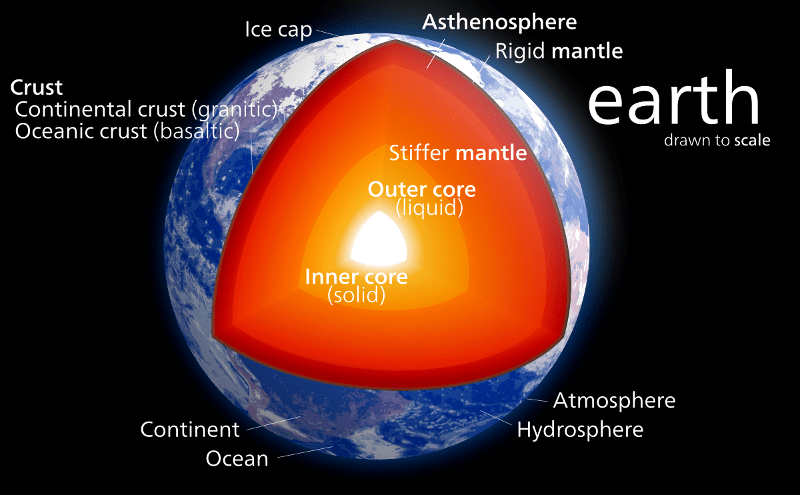
There are also volcanoes known as domes because of their characteristic shape, which is a consequence of the viscosity of the lava that forms them. Volcanoes consisting of successive lava domes can also be called composite volcanoes (e.g. Mount Unzen in Japan and the Ajusco volcano in Mexico). Generally, their size is several hundred meters high and their diameter is in proportion to their height.
Shield volcanoes are so named because their shape is reminiscent of Viking shields, i.e., they are very broad shapes relative to their height (e.g., the Mauna Loa volcano in Hawaii and the Chichinautzin volcano in southern Mexico City). Shield volcanoes can be very large buildings with a height of more than 1,000 meters and a diameter of hundreds of kilometers, as is the case of the Hawaiian volcanoes. Mexican shields, however, have heights of a few hundred meters and diameters of tens of kilometers.
The most spectacular volcanoes because of their size are the calderas (for example, the caldera of La Primavera in the state of Jalisco). These volcanoes are characterized by craters of more than 2 kilometers in diameter.
Sometimes it is convenient to classify volcanoes according to their activity. Thus, we have extinct, dead, or inactive volcanoes, which are those that are not likely to erupt (for example, the Ajusco volcano). Living volcanoes are those that may erupt in the future. These volcanoes are also known as active volcanoes and are those that have erupted during historical times (e.g. Colima Volcano of Fire).
It is considered that, in general, historical times may cover the last 10,000 years before the present. The term active volcano is often confused with erupting volcano, which spews lava or solid incandescent or cold fragments. Volcanoes can be named differently according to their state of activity.
For example, an active volcano that begins to spew lava and/or pyroclasts may be called an erupting volcano. When a volcano stops erupting it can be called a dormant volcano, furthermore, if in its sleepiness the volcano remains passively spewing gases through conduits or fractures, it can be said that the volcano is in a fumarolic state.
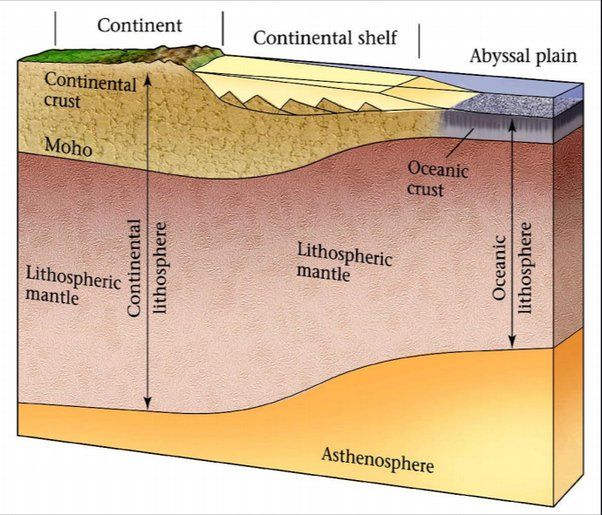
Types of eruptions
A volcanic eruption can be defined according to two aspects: the time during which the volcano spews materials and the type of materials spewed.
An active volcano, whether it is in a fumarolic state or not, can remain dormant for decades, centuries, and in extreme cases thousands of years. The "awakening" of a volcano occurs when it begins to leave its state of somnolence, being this noticeable by the increase in the volume of fumaroles, the chemical composition of the same, and the appearance or increase in the number of earthquakes under the volcano.
However, an eruption does not begin until there is the emission of solid and liquid materials, in addition to gases. Thus, a volcanic eruption is the emission of solid, liquid, and gaseous materials through a volcanic structure. The solid fragments may be from magma that has just reached the surface or near it, or they may be fragments of the rocks that constitute the volcanic edifice and conduits.
Explosions produced by the increase in volume or sudden expansion of volcanic gases are responsible for the fragmentation of rocks.
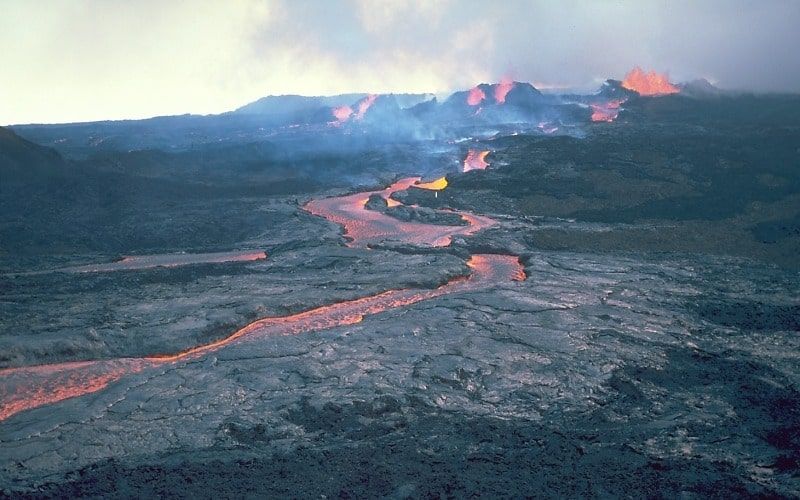
Time plays an important role in defining an eruption. The duration of the eruption is the time between the first emission of materials through the mouth of the volcano until materials stop coming out and the volcano returns to its resting state. An eruption can last days, months, or years, and have several eruptive phases that can last hours or even days.
In turn, a phase may consist of several eruptive pulses that can last from a few seconds to a few minutes. In the case of the Popocatepetl volcano, we have seen several eruptive pulses, such as the one that occurred on June 30, 1997, when ashes reached Mexico City. We have also witnessed long eruptive phases, such as the one that occurred between December and January 1994-1995. There have also been long periods of apparent calm of activity, without this meaning that the volcano has ended its current eruption.
These lapses of "calm", characterized by the passive emission of gases, are the ones that separate one eruptive phase from another or the different eruptive pulses. Sometimes, there are lapses of apparent calm from the point of view of the explosiveness of the events, but in reality, the eruption is carried out effusively inside the crater. It is important to point out that Popocatepetl has not yet reached the end of the present eruption and that at the time of writing there is no indication to predict the proximity of its termination.
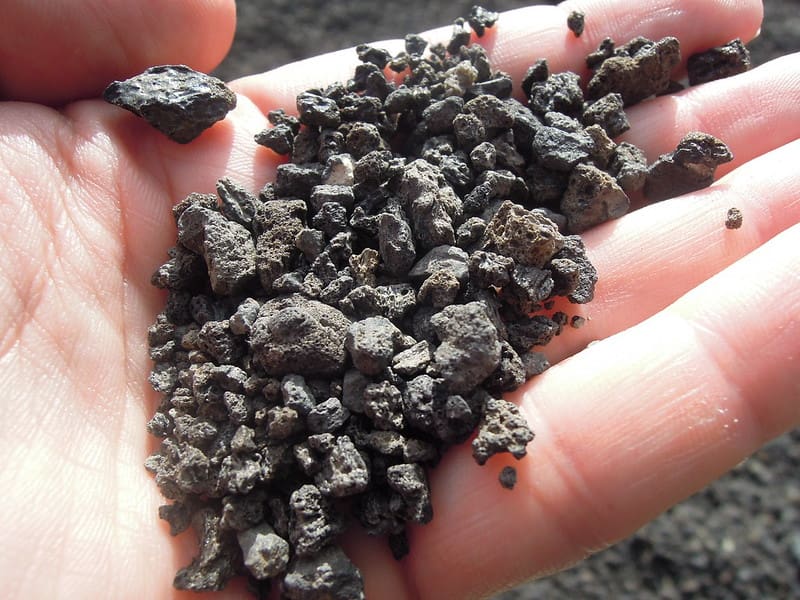
Volcanoes are sometimes classified by the type of eruption they carry out, according to typical eruptions that occur in some volcanoes. This classification depends on the type of materials that volcanoes release (solids, liquids, and gases) and the explosiveness with which they release them. If a volcano emits lavas, its type of activity is called effusive. Thus, a volcano with an effusive activity that typically emits fluid lavas is called Hawaiian, since Hawaiian volcanoes are characterized by spewing this type of lava most of the time.
A particular case of volcanoes that spew lavas is the island volcanoes, which are characterized by the great fluidity of the same. When the activity of a volcano involves, in addition to effusive activity, explosions due to the sudden expansion of gases, its activity is called explosive.
Volcanoes that in addition to emitting lavas emit gases in explosive form, although to a low degree, are called strombolian since the Stromboli volcano in Italy is the typical example of a volcano with a low explosive activity that throws solid fragments, liquids, and few gases. The lavas are not always very fluid and if they do not travel long distances due to their viscosity, they form domes that are generally unstable and tend to collapse.
When this happens, clouds of incandescent material are formed, which are called pyroclastic flows. Volcanoes with this type of activity are called Pelean volcanoes because this type of eruption was observed in detail in the Peleé volcano on the island of Martinique in the early 20th century.
However, when the eruptive activity of volcanoes includes a smaller amount of liquid or solid material and its eruptive activity is more explosive due to higher gas content, it is called Vulcanian. A vulcano in Italy is the typical example of a volcano with this type of activity.
Volcanoes that have had paroxysmal eruptions, i.e., involving large amounts of magma and especially material fragmented by explosions and gases, are called plinian. A volcano throughout its existence may develop different types of eruptions.
For example, Hawaiian volcanoes can develop strombolian eruptions, in the same way, that plinian volcanoes such as Vesuvius can develop Vulcanian or strombolian eruptions, or during an eruption, volcanoes can develop different types of eruptive activity. In this context, Popocatepetl has had several volcanic eruptive phases, but it has also had several effusive phases without any Pellic activity.
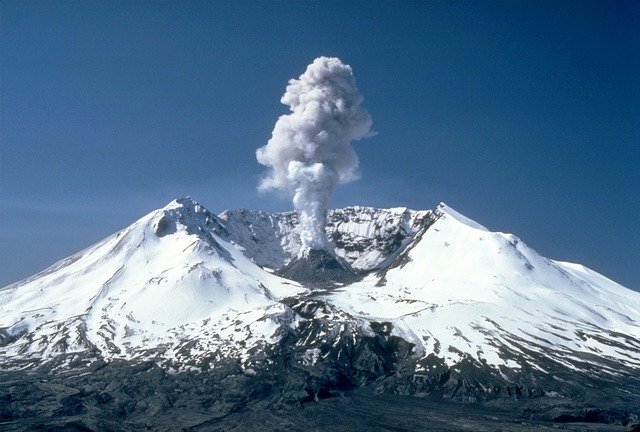
Reflections
Volcanoes such as Popocatepetl have a degree of danger that is estimated according to their present eruptive style and past eruptions. It is important to locate the potential of the activity in its true dimension. To do so, it is necessary to be informed and follow the instructions of the corresponding authority.
Volcanic activity is at the same time surprisingly beautiful and potentially violent and destructive. For those of us who live in volcanic regions, such as those of us who live in the center of the country, it is important to be aware of this and to transmit this awareness to those around us, since disasters occur when the population is vulnerable to nature.
The degree of vulnerability depends on the degree of knowledge we have of the environment that surrounds us since this helps us to learn how to lessen the effects of natural phenomena such as volcanic eruptions by taking the necessary preventive measures. If we manage to foresee the effects of eruptions, they can diminish their damaging facet, and thus we will be able to be enraptured by a portentous and beautiful phenomenon, and perhaps converse with nature through its contemplation and study.
Author: Hugo Delgado Granados, Source: Correo del Maestro. Núm. 27, p.14-21.




